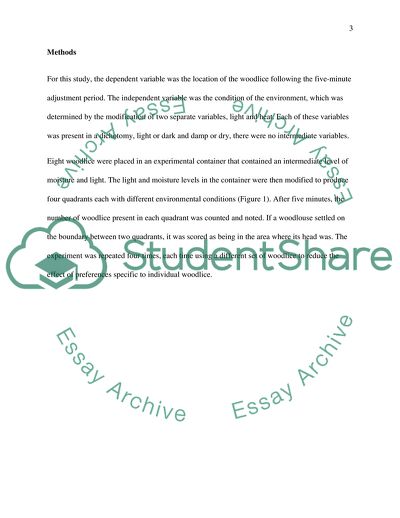Cite this document
(The Effect of Light and Moisture on Distribution of Woodlice Research Paper Example | Topics and Well Written Essays - 1250 words, n.d.)
The Effect of Light and Moisture on Distribution of Woodlice Research Paper Example | Topics and Well Written Essays - 1250 words. https://studentshare.org/biology/1765649-an-investigation-into-the-effect-of-light-and-moisture-on-distribution-of-woodlice
The Effect of Light and Moisture on Distribution of Woodlice Research Paper Example | Topics and Well Written Essays - 1250 words. https://studentshare.org/biology/1765649-an-investigation-into-the-effect-of-light-and-moisture-on-distribution-of-woodlice
(The Effect of Light and Moisture on Distribution of Woodlice Research Paper Example | Topics and Well Written Essays - 1250 Words)
The Effect of Light and Moisture on Distribution of Woodlice Research Paper Example | Topics and Well Written Essays - 1250 Words. https://studentshare.org/biology/1765649-an-investigation-into-the-effect-of-light-and-moisture-on-distribution-of-woodlice.
The Effect of Light and Moisture on Distribution of Woodlice Research Paper Example | Topics and Well Written Essays - 1250 Words. https://studentshare.org/biology/1765649-an-investigation-into-the-effect-of-light-and-moisture-on-distribution-of-woodlice.
“The Effect of Light and Moisture on Distribution of Woodlice Research Paper Example | Topics and Well Written Essays - 1250 Words”. https://studentshare.org/biology/1765649-an-investigation-into-the-effect-of-light-and-moisture-on-distribution-of-woodlice.


